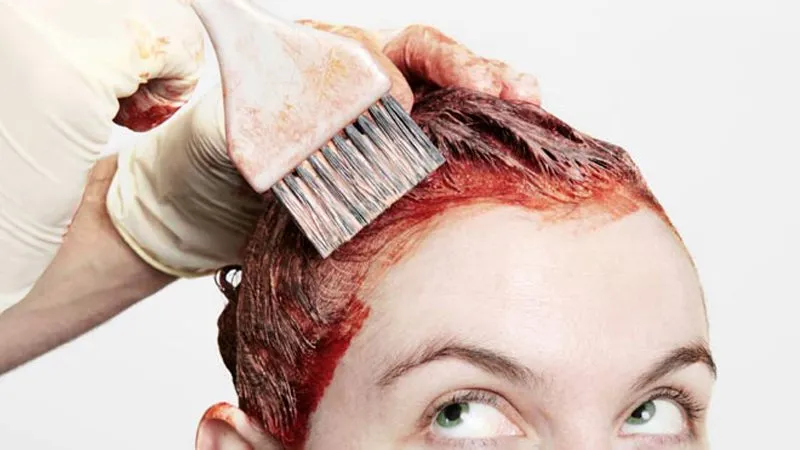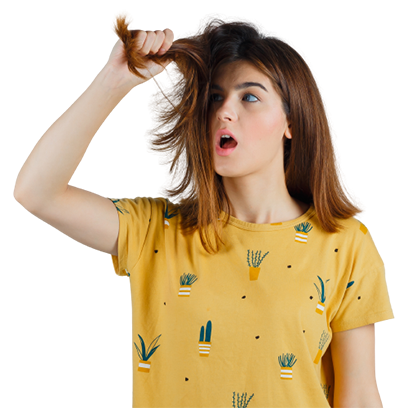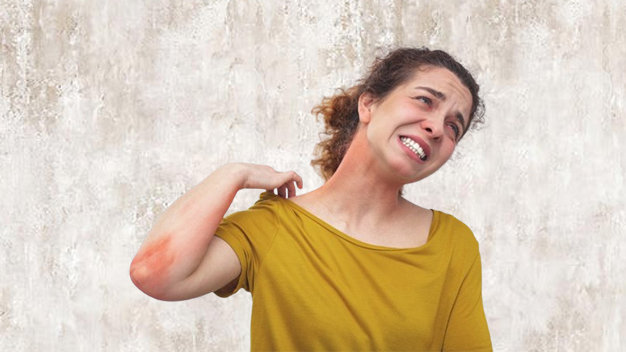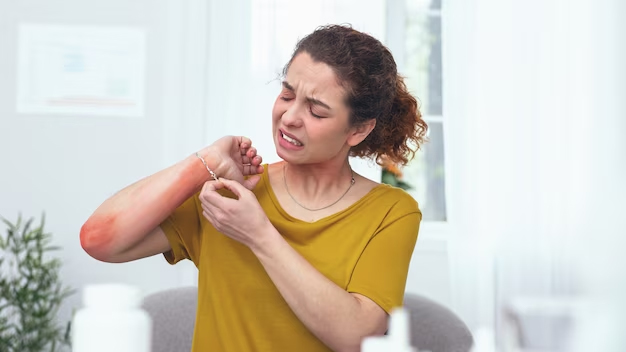On This Page
Hair Dye Allergy – Causes, Symptoms, and Ayurvedic Treatment
शीतमारुतसंस्पर्शातप्रदुष्टौकफमारुतौ l
पित्तेनसहसंभूयबहिरन्तर्विसर्पत: l l
Products used for hair coloring contain many elements that can cause skin irritation and other allergic reactions. Allergic contact dermatitis can be aroused by exposure to hair dye. This is caused mainly by constituents hair dye called paraphenylenediamine (PPD). PPD usually comes in accompany of an oxidizer. On combination of both, PPD gets partially oxidized. This oxidation results in allergic reactions in sensitive people. In Ayurveda, the condition of allergic contact dermatitis caused by various substances is included under Sitapitha disease.
Symptoms of Hair Dye Allergy
Either sensitivity or allergy to PPD or other ingredients in the hair dye can occur in a sensitive person. Sensitivity results in symptoms of contact dermatitis, like burning sensation, redness of the skin, dry skin, etc. But, symptoms of allergy to hair dye can be mild or serious. It includes:
- Burning sensation on the scalp, face, or neck
- Blisters
- Itching and swelling of the scalp and face
- Eyelids, lips, hands, and feet can become swollen
- Reddish rashes on the body
Ayurvedic Reference of Hair Dye Allergy
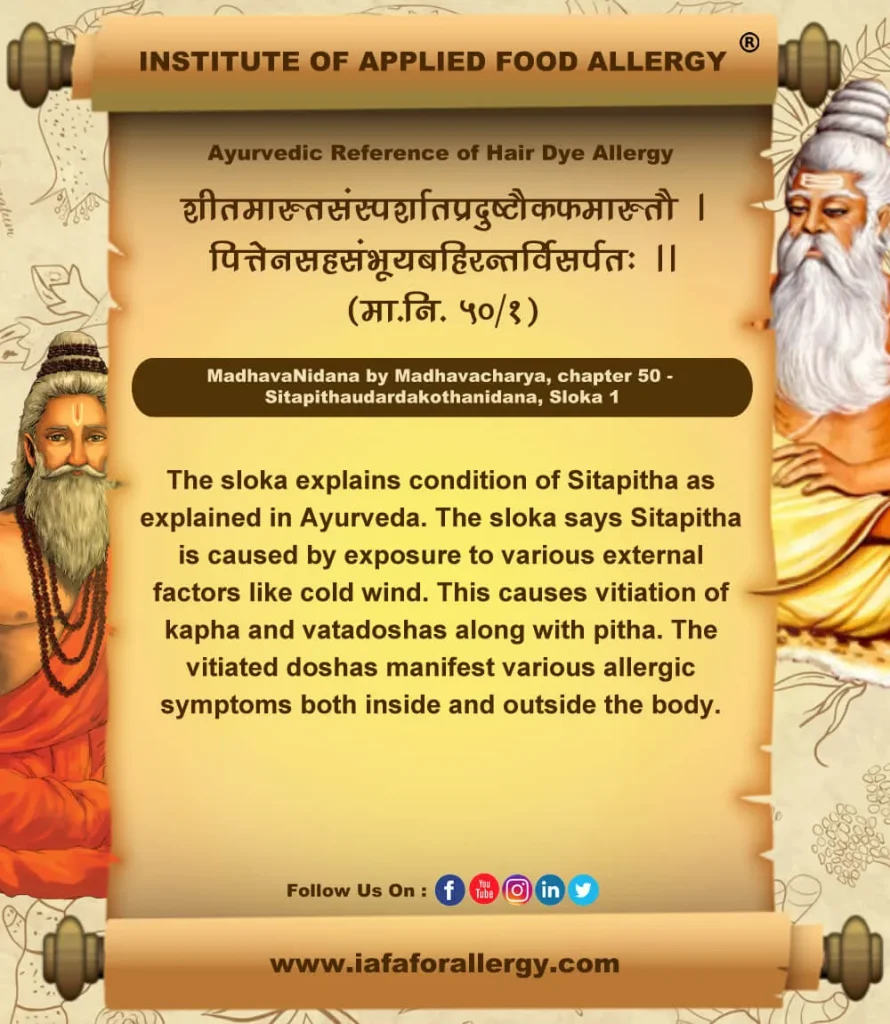

“Dr. Gupta’s IAFA provides a promising cure from contact dermatitis resulting from various products including hair dye. IAFA has excellent infrastructure and health services to help you in your ailments. Institute of Applied Food Allergy® is famous for its remarkable health service and patient care.
Visit IAFA and feel the warmth of health!!
– Dr. Sahil Gupta (B.A.M.S., M.H.A.)
Ayurvedic Allergy Specialist
CEO & Founder of IAFA®
At last, Hair Dye Allergy Management

Trusted by
More than 90,000 Patients

Convenient
at-Home Treatments

9.2 / 10
Customer Satisfaction Score
Ayurvedic Treatment of Hair Dye Allergy
Hair dye Allergy can be treated effectively through Ayurveda.
Internal Medicines in Hair Dye Allergy
Following are some of the effective Ayurvedic medicines for internal use.
- Padoladi Kashaya
- Guluchyadi Kashaya
- Nimbadi Kashaya
- Panchatiktaka Kashaya
- Gandhaka Rasayana
- Dasamoola hareethaki lehya
- Khadirarishta
- Chandanasava
- Kaisora guggulu gulika
- Avipathy churna
External Medicines in Hair Dye Allergy
Following medicines are applied externally based on the manifestation of symptoms.
- Aragwadhadi Kashaya
- Nalpamaradikera
- Lajjalukera
- Nimbadi churna
- Triphala churna
- Eladigana churna
Treatment Procedures in Hair Dye Allergy
Ayurveda advises various treatment procedures including purification therapies for complete cure of Hair dye Allergy. It includes:
- Snehapana (Intake of medicated ghee)
- Vamana (Emesis)
- Virechana (Purgation)
- Takradhara (Pouring medicated butter milk)
- Kashayadhara (Pouring medicated decoction)
- Raktamoksha (Blood-letting)
Single Herbs in Hair Dye Allergy
Single drugs in proper dose are effective in the treatment of allergy.
- Aragwadha (Cassia fistula)
- Vibheetaki (Terminalia belerica)
- Nimba (Azadirachta indica)
- Lajjalu (Mimosa pudica)
- Sirisha (Albizia lebbeck)
- Khadira (Acacia catechu)
- Tulsi (Ocimum sanctum)
- Aragwadha (Cassia fistula)
- Kumari (Aloe vera)
Diet in Hair Dye Allergy
Pathya (Do’s)
- Vegetarian diet
- Include fruits in the diet
- Green leafy vegetables
- Easily digestible food
- Do patch test before application of hair dye
- Identify the least allergy causing hair dye for you
- Use of mild hair dye
- Adequate sleep
- Drink enough quantity of water
Apathya (Don’ts)
- Pappad
- Egg
- Oily food
- Junk food
- Red chilly
- Black gram
- Sour food
- Fast food
- Long-time application of dye
- Day sleep
- Use of strong hair dye
Yoga and Pranayama in Hair Dye Allergy
- Sirshasana
- Padahasthasana
- Paschimothasana
- Vrikshasana
- Bhujangasana
- Gomukhasana
- Sarvangasana
- Vajrasana
- Savasana
- Surya namskar
Pranayama helps to retain the pathway of body channels and to purify them.
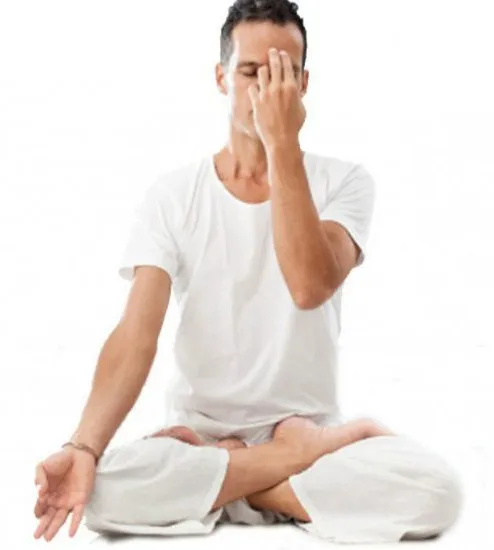
Frequently Asked Questions
Question: What are the Causes of Hair Dye Allergy?
Answer: Hair dye allergy is caused mainly by an ingredient in the hair dye called paraphenylenediamine (PPD).
Question: What are the Symptoms of Hair Dye Allergy?
Answer: Major symptoms of hair dye allergy include burning sensation, blisters, rashes, itching, swelling etc.
Question: Is Ayurvedic Management Effective in Hair Dye Allergy?
Answer: Yes. Ayurvedic treatment is very effective in hair dye allergy. Ayurveda provides effective internal and external medicines as well as various treatment procedures to cure allergic symptoms caused by hair dye.
Dr Gupta’s IAFA is a reputed institute that provides genuine Ayurvedic treatment for all chronic and acute allergies and infections. IAFA is famous for its remarkable health service and patient care.
Visit IAFA and feel the warmth of health!!
Was this Page Helpful?
So IAFA Root-Cause Treatment of Your Hair Dye Allergy is Just 3 Steps Away!

01. Connect With Us
Share your history of illness or Book your appointment

02. Consult With Us
Dr. Gupta a certified Ayurvedic Allergist Consultant

03. Root Cause Treatment
Get an accurate diagnosis, medicines, diet & lifestyle change
Hair Dye Allergy – Case Studies
Real Case Studies of Successfully Treated Patients from All Around the World by IAFA Ayurveda®
-
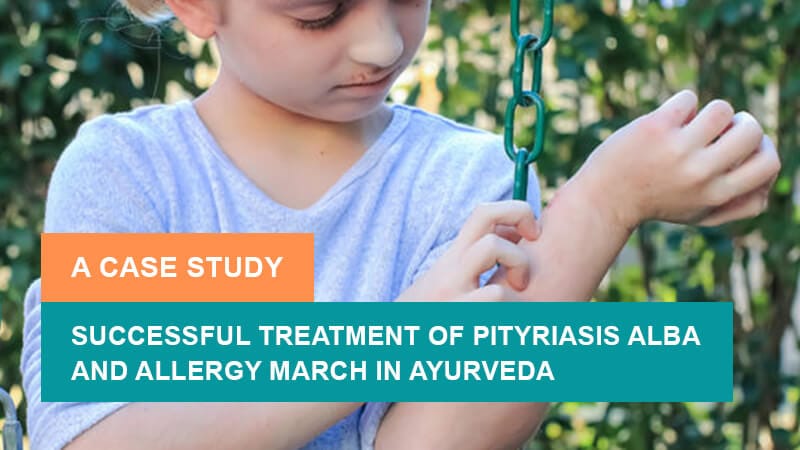
Successful Treatment of Pityriasis Alba and Allergy March in Ayurveda – A Case Study
It is a case study about successful treatment of Pityriasis Alba and…
-

Successful Treatment of Gallstones (Cholelithiasis) with Ayurvedic Medications – A Case Study
It is a case study about the successful treatment of Gallstones (Cholelithiasis)…
-
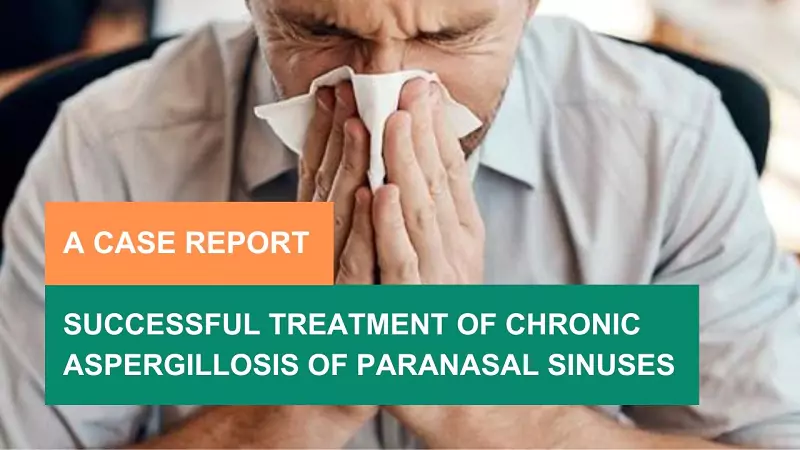
48-Year-Old Male Patient Got Relief from Chronic Aspergillosis of Paranasal Sinuses – A Case Study
Fungal infections can be treated with a high success rate by various…
-

6-Year-Old Child Patient Got Relief from Gluten Intolerance and Wheat Allergy – A Case Study
It is a case study of a 6-year-old Child Patient who got…

